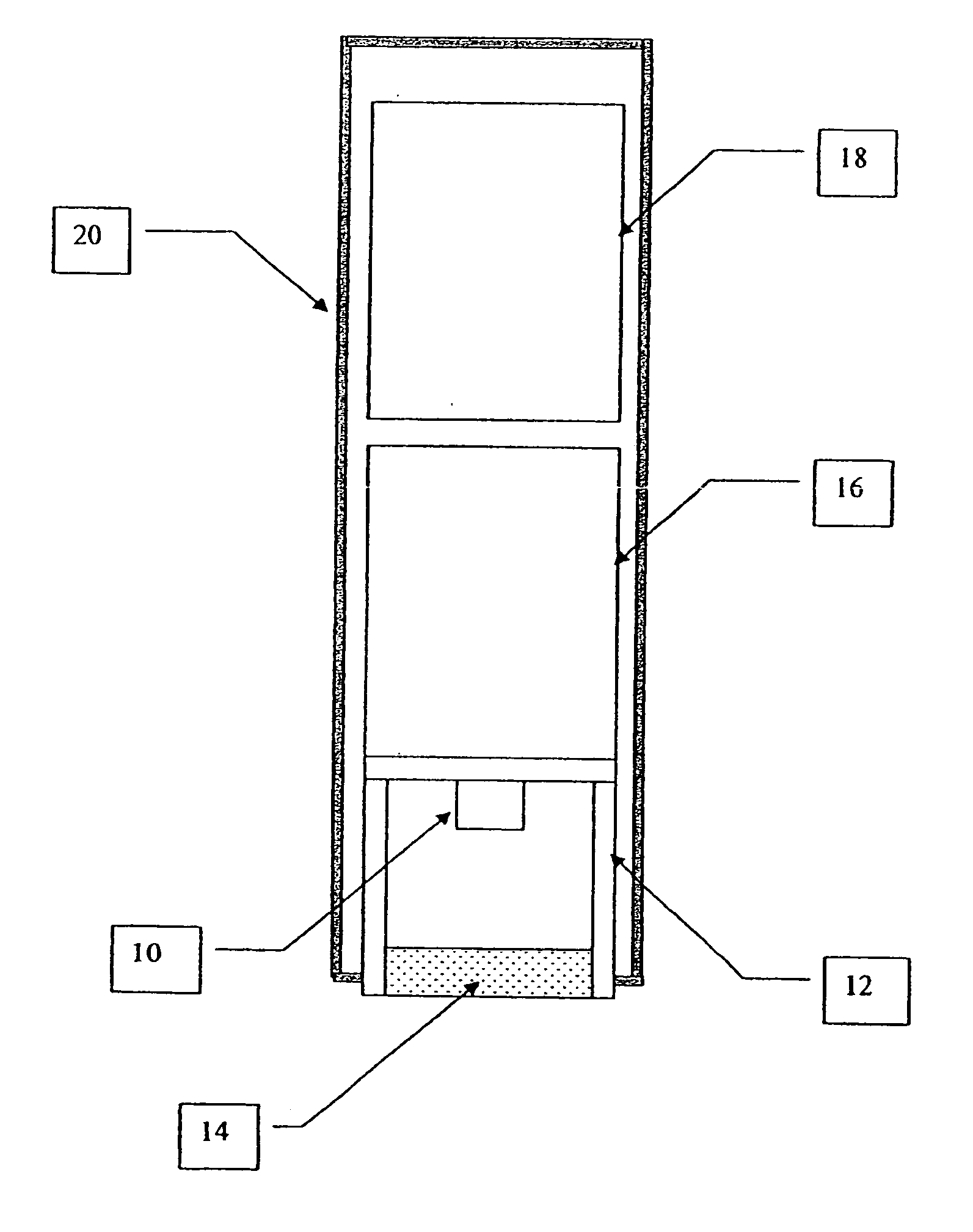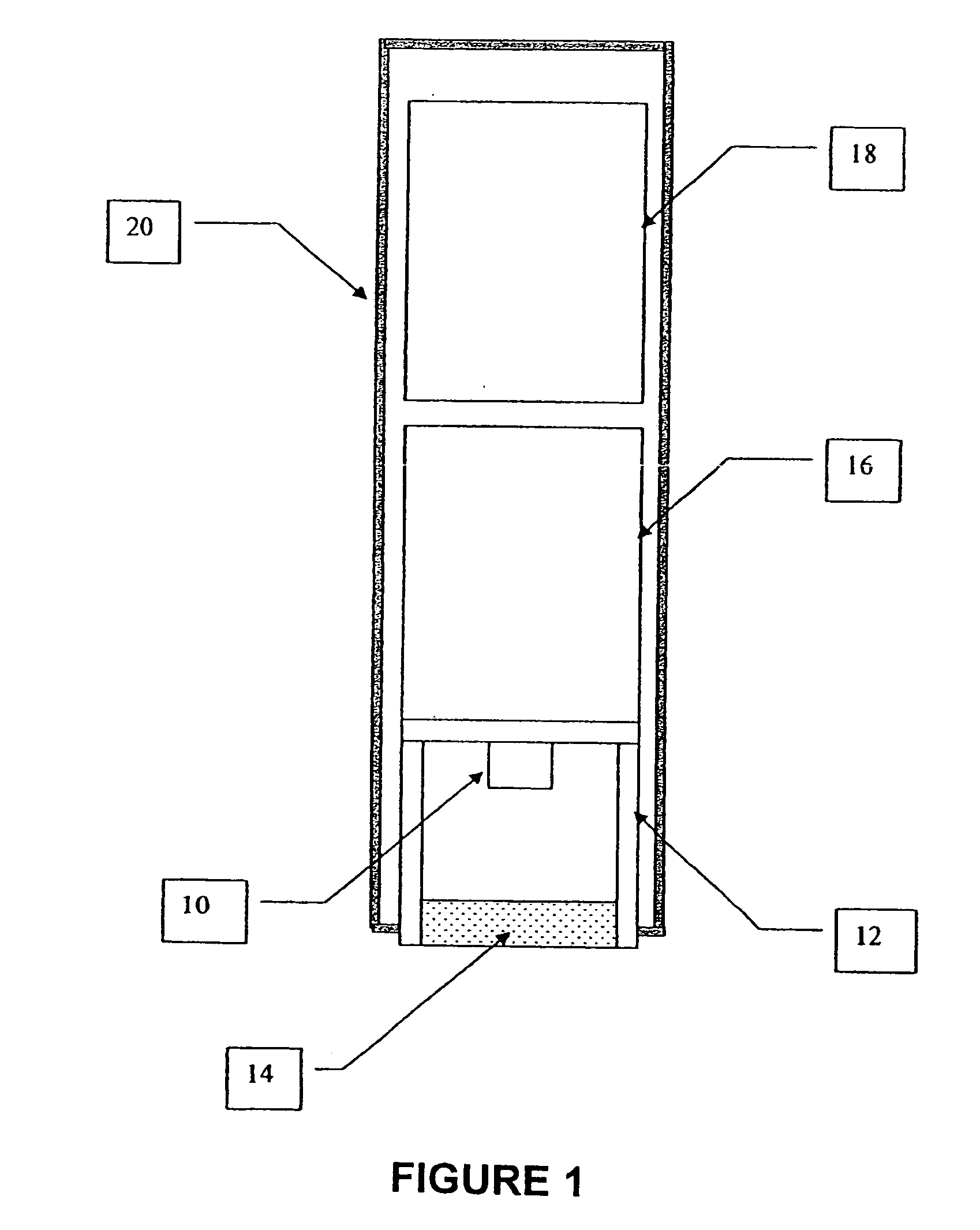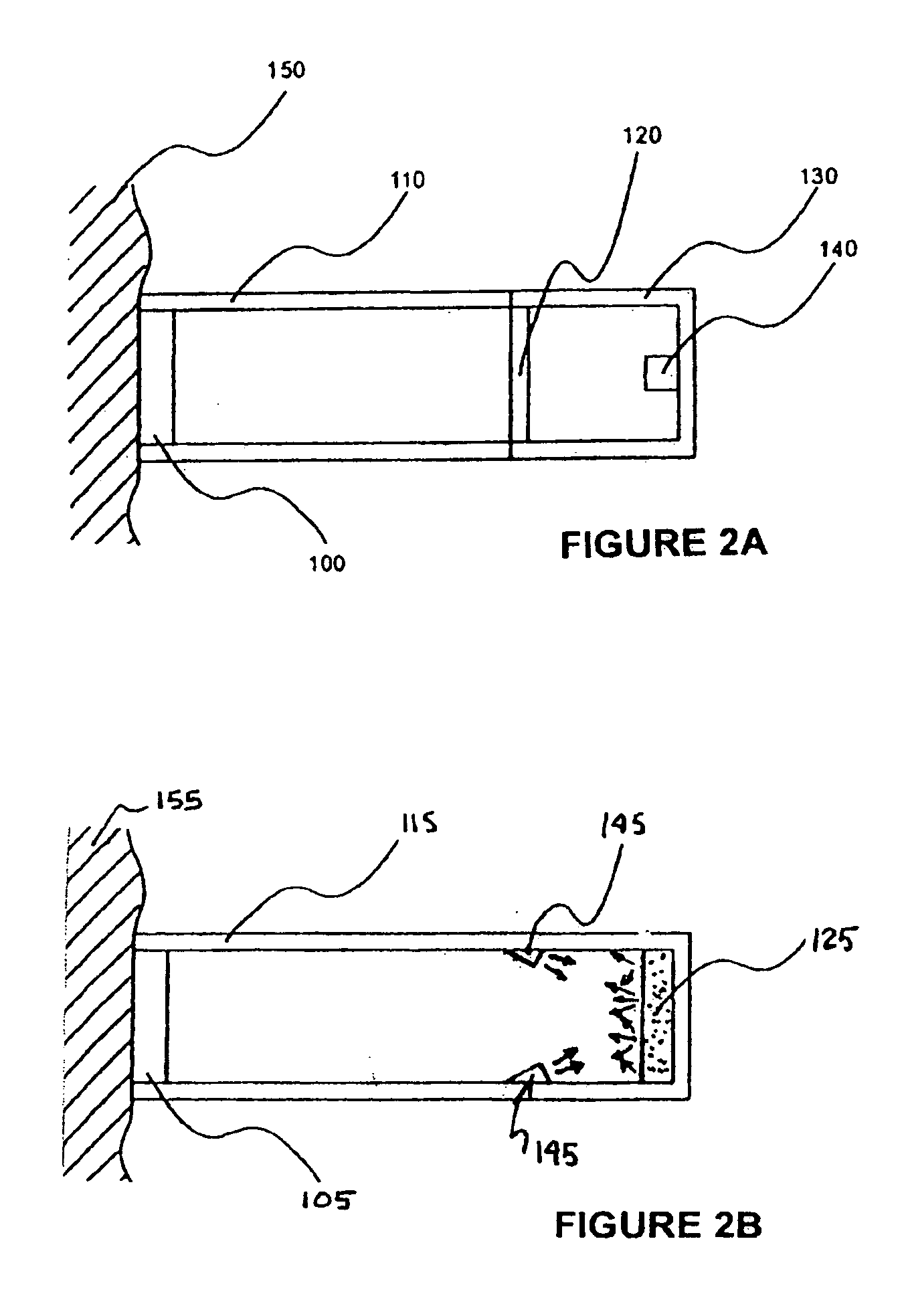Self-contained, diode-laser-based dermatologic treatment apparatus and method
a diode-laser and self-contained technology, applied in the field of self-contained, diode-laser-based dermatologic treatment apparatus and methods, can solve the problems of high cost and inconvenience, device and the treatment performed with the device to be extremely hazardous if not used or conducted properly, and the effect of reducing the risk of infection
- Summary
- Abstract
- Description
- Claims
- Application Information
AI Technical Summary
Problems solved by technology
Method used
Image
Examples
example 2
[0232] An Incoherent, Directed Source (e.g., a Flashlamp)
[0233] A popular device for hair-regrowth inhibition as well as for facial "rejuvenation" utilizes a flashlamp with visible and near infrared output and an exit aperture of 1 cm by 2 cm, and an output energy of 80 J (40 J / cm.sup.2) (see Hode, L, "Are lasers more dangerous than IPL instruments?" Lasers in Surgery and Medicine, Supplement 15, 2003, p. 6; and poster presentation at corresponding conference). Such sources typically have a directed output of about plus or minus 20 degrees, i.e. a solid angle .OMEGA. of about 0.4 steradians. If it is assumed that (very roughly) half of the output energy is in the visible, and half is in the 700 nm-900 nm range, a value of the wavelength correction factor C.sub.4 of .about.1.3 is appropriate. The conclusions of this section are insensitive to this parameter in any case. Because this device emits incoherent light, the correction factor C.sub.6 appropriate for "extended sources" can be...
PUM
 Login to View More
Login to View More Abstract
Description
Claims
Application Information
 Login to View More
Login to View More - R&D
- Intellectual Property
- Life Sciences
- Materials
- Tech Scout
- Unparalleled Data Quality
- Higher Quality Content
- 60% Fewer Hallucinations
Browse by: Latest US Patents, China's latest patents, Technical Efficacy Thesaurus, Application Domain, Technology Topic, Popular Technical Reports.
© 2025 PatSnap. All rights reserved.Legal|Privacy policy|Modern Slavery Act Transparency Statement|Sitemap|About US| Contact US: help@patsnap.com



